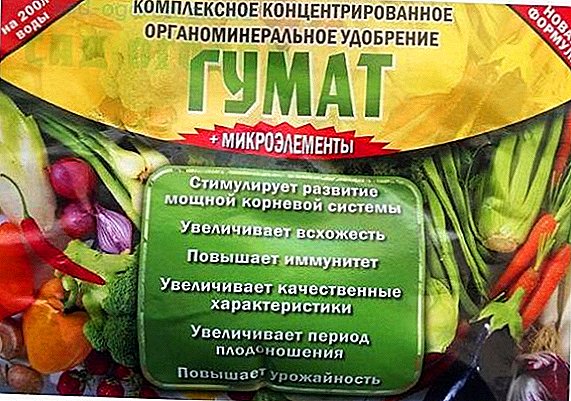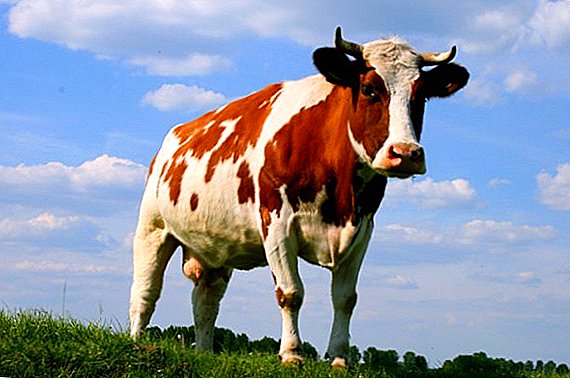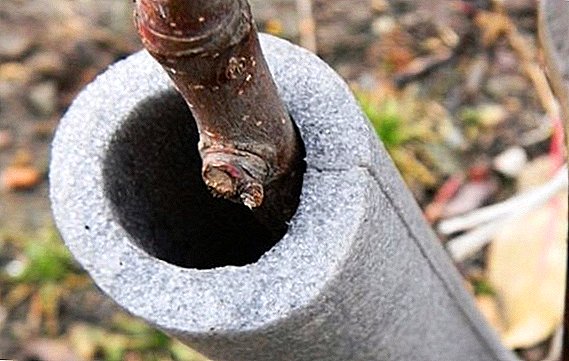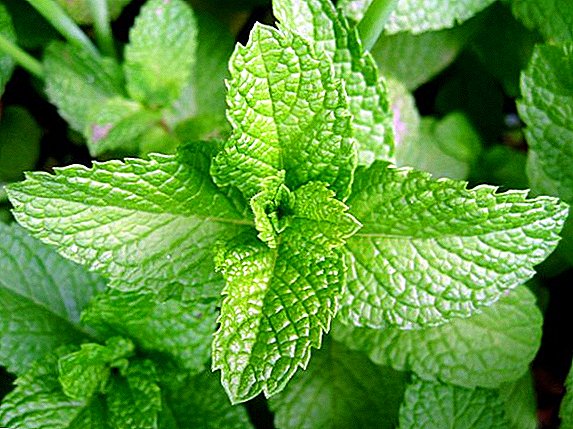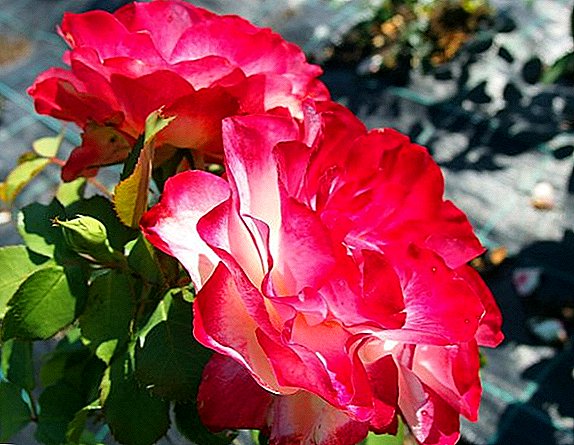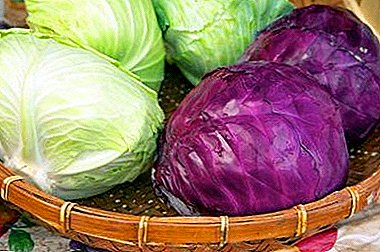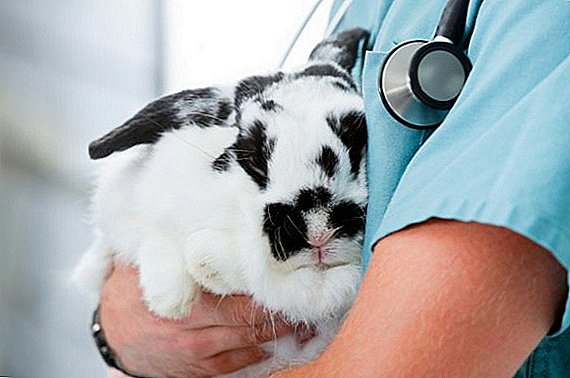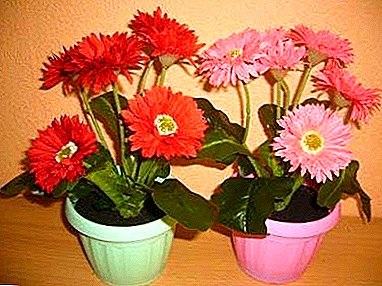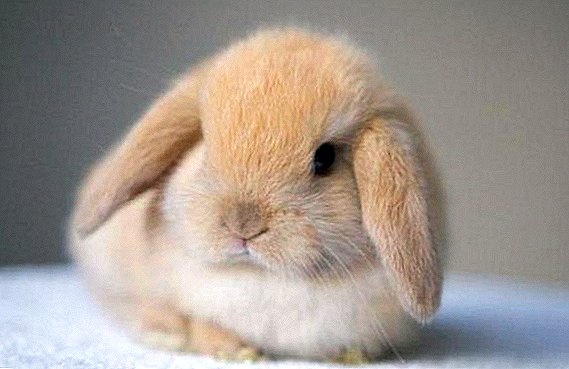 With a full balanced diet, decorative rabbits can live for more than 10 years.
With a full balanced diet, decorative rabbits can live for more than 10 years.
However, their diet requires special attention, since eared differ from their “full-size” fellows by increased sensitivity of the digestive tract and susceptibility to a number of dangerous diseases.
In addition, furry animals often suffer from inherited pathologies.
Next, we will tell you how to feed your pets to avoid their health problems.
What is better to feed: dry or natural feed?
Many breeders of domestic rabbits, tempted by the widest assortment of factory feed, from the first months of life sit down their wards on a dry diet, they say experts selected all the necessary components in the right quantities.  Others, on the contrary, prefer only natural nutrition, independently combining vital substances.
Others, on the contrary, prefer only natural nutrition, independently combining vital substances.
Important! Giving food to rabbits at the same time..
It makes sense to immediately determine what you will feed your eared pet, because, having become accustomed to factory food, he already does not want to accept natural food. Who are the rabbit bosses right, let's understand together.
| Comparative analysis of beneficial and harmful properties dry and natural feed for ornamental rabbits | ||
| Dry factory | Natural | |
| Benefit |
|
|
Harm |
|
|
Important! Make sure that the watering of the ward is always fresh water. According to experienced rabbit breeders, it should not be boiled before use, because it destroys trace elements that are vital for the pet.
According to veterinarians, only those types of feed should be present in the diet of ornamental rabbits, which not only satisfy hunger, but without harm to the body, provide it with a complex of substances necessary for growth.  Do not forget that such animals occupy their niche in the group of herbivores. Therefore, they should eat exclusively with greens, grass, branches, foliage, seeds, fruits, berries and vegetables.
Do not forget that such animals occupy their niche in the group of herbivores. Therefore, they should eat exclusively with greens, grass, branches, foliage, seeds, fruits, berries and vegetables.
It turns out that the factory variations do not correspond at all to the true nutritional needs of eared animals. Moreover, the high dosages of sugars, fats, starch and all kinds of waste contained in dry food make a healthy pet a sick, apathetic creature in a very short time.
What to feed a decorative rabbit
Nutrition of eared significantly differs from the diet of other domestic animals and only at first glance it seems very simple. In fact, limited to only one grass or hay can not. The rabbit menu must contain various ingredients, including cereal, juicy, coarse and mixed fodder.
Did you know? In Australia, the breeding of rabbits is prohibited by law, the violation of which is fraught with a fine of 30 thousand dollars. This is due to the fact that local people consider wild animals as the most destructive pests. Every year, they destroy agricultural crops and their rapid activity leads to the degradation of whole lands, causing damage to the population in excess of $ 600 million.
Delve into the details of competent preparation of a nutritious diet for eared. 
Roughage
This is the basis of the nutritional ration for any species and age category of rabbits. Such products are very useful because they are well digested, improve intestinal motility and contribute to the grinding of teeth.
Important! From coarse deciduous-branch feeds, dwarf rabbits are absolutely contraindicated for elderberry, rushinovy, cherry, apricot, peach, plum, cherry and cherry branches. The fact is that they contain substances that are toxic to animals.
In addition, they are rich in important proteins for the full growth of the animal, minerals and vitamins. This is the main source of fiber, which is the key to the natural digestion of food. Rabbits such feed can be given throughout the year, their role is particularly high in the autumn-spring period.
Rough food - a broad concept that includes:
- Hay. It can be given to pets at each feeding in unlimited quantities. The main thing - to monitor the dryness and freshness of the product. This is indicated by its pleasant aroma and greenish herbal color. In the summer you can feed dried plants. For hay harvesting is best suited: stinging nettle, calendula, clover, yarrow, burdock, seeded grass, star sprout, knotweed, asparagus stalks, hogweed, hop, dandelion, rhubarb, swan.
- Straw. Suitable for the diet of adults only. Pea, lentil, millet and oat are characterized by the highest nutritional value. It is given to rabbits once a day in the form of steamed chop, which is mixed with compound feed in a 5: 1 ratio. Such an ingredient may be present in the rabbit menu, when there is no other coarse feed.
- Leaves and branches of trees. In terms of nutritional value, this type of food is equivalent to meadow grasses. It can be given, not limited to the age of the wards, but the maximum daily rate should not exceed 200-300 grams. The most suitable for such purposes are: birch, linden, ash, willow, aspen, maple, silver poplar, hornbeam, elm, pear, acacia, apple tree. It is desirable that this kind of food was always in the zone of availability eared.

Herbs and greens
These ingredients are easily digested and nourish eared with beneficial substances. They accumulate in large quantities: fiber, vegetable proteins, carbohydrates, vitamins, macro-and micronutrients.
An additional bonus for furry pets is the possibility of natural teeth sharpening, which is important for their health. It is desirable that juicy food present in the diet of dwarf rabbits year-round, and with each feeding the pet needs to offer different types of greenery.
Find out what breeds of decorative rabbits are among the best. And also, to the decorative breeds include such as Angora, Fox dwarf, color shorthair.
These include:
- scalded young nettle;
- carrot tops;
- dandelions;
- parsley;
- dill;
- plantain;
- yarrow;
- young burdock leaves;
- wild clover;
- chaff;
- tansy;
- strawberry foliage;
- basil;
- topinambur stalks;
- celery tops;
- quinoa;
- all types of lettuce, with the exception of lettuce.
 Fresh grass is given to domestic animals three times a day in such a way that the daily rate is 200-300 g. It is important to ensure that wet and poisonous greens, especially wormwood and dope, are not in your handful. Before giving food to animals, be sure to rinse it out and dry it a little.
Fresh grass is given to domestic animals three times a day in such a way that the daily rate is 200-300 g. It is important to ensure that wet and poisonous greens, especially wormwood and dope, are not in your handful. Before giving food to animals, be sure to rinse it out and dry it a little.Did you know? Rabbits chew 120 times a minute and have more than 17 thousand taste buds.
Vegetables
In addition to the feeds listed above, vegetable products are extremely important for dwarf rabbits. They are well digested and feed the pet's body with necessary components, moreover, due to the large amount of water, which in many fruits is about 70-80%, they are quickly absorbed.
The nutritional value of these ingredients lies in the available proteins, fats of vegetable origin, as well as a wide range of vitamins and minerals.
The list of recommended vegetables read:
- carrots (very much loved eared of any age);
- turnip;
- tomatoes;
- zucchini;
- cucumbers;
- pea pods;
- beans;
- pumpkin;
- Brussels sprouts;
- broccoli;
- the fruits of Jerusalem artichoke.
 It is important that the pulp, cleared of seeds, gets into the feeder of the animal, otherwise malfunctions of its digestive tract are possible. In the general diet, the daily rate of these ingredients should not exceed 70 g, and cabbage and beans should be offered once in limited quantities - up to 10 g per day.
It is important that the pulp, cleared of seeds, gets into the feeder of the animal, otherwise malfunctions of its digestive tract are possible. In the general diet, the daily rate of these ingredients should not exceed 70 g, and cabbage and beans should be offered once in limited quantities - up to 10 g per day.Vegetables can be given both raw and cooked. Of course, more benefits will be from fresh fruit. Beware is worth potato and beets, because they provoke eating disorders and diarrhea.
Did you know? The eyes of rabbits are arranged in such a way that, without turning around, they can observe what is happening behind them.
Fruits
This type of feed is an excellent addition to the basic composition and is recommended infrequently in limited quantities. Most likely, it should be perceived as a treat for fluffy sweethearts. We can not allow the animal to eat only fruit.
Otherwise, do not avoid diarrhea, apathy, abdominal distention and intestinal upset. Watch the reaction of your ward to a specific type of fruit, since in some animals individual intolerance is possible, as a result of which diseases are likely.
Immediately you should abandon the exotic.
Pets in small dosages recommended sliced:
- pears;
- apples;
- watermelons (you can give peel);
- melons;
- bananas (such self-indulgence should not be repeated often, otherwise the animal may have digestive problems);
- gooseberry berries (it is recommended to give in 2-3 days);
- Strawberry;
- cranberry;
- blueberry;
- sea buckthorn;
- dog rose;
- fresh figs (not dried fruit);
- black and red currants;
- grapes (give the whole clusters with foliage and vine).
 All the listed berries and fruits provide pets with a good appetite and strong immunity, contribute to the normalization of the digestive organs and remove shreds of wool from the intestines. The benefits of them will be with moderate eating and changing fruits at each feeding.
All the listed berries and fruits provide pets with a good appetite and strong immunity, contribute to the normalization of the digestive organs and remove shreds of wool from the intestines. The benefits of them will be with moderate eating and changing fruits at each feeding.Ensure that no dirty or spoiled food gets into the feeder. Before use, they should be thoroughly washed, dried and cut, as a whole animal can take food for a toy.
Fruits are fed exclusively raw only once a day, limited to 15-20 g portions. Abuse of these foods can lead to gastrointestinal disorders.
Important! Citrus fruits are unacceptable in the rabbit diet because they have a strong smell and a specific taste, which is detrimental to the health of animals.
Other succulent feed
In winter, when there is no fresh grass, herbs, fruits, berries, and a small selection of vegetables, silage helps to diversify the pet's food. Due to the richest chemical composition, this juicy ingredient leads the list of the most useful feed.
It is recommended to animals of different ages, especially sukrolnye females and baby rabbits, born in the fall. Breeders often complain that such babies develop poorly throughout their lives.  According to veterinarians, individuals who in the first months did not receive nutrients will no longer be able to catch up and will be stunted, therefore, silage, which is a storehouse of vitamins and minerals, will come to the rescue.
According to veterinarians, individuals who in the first months did not receive nutrients will no longer be able to catch up and will be stunted, therefore, silage, which is a storehouse of vitamins and minerals, will come to the rescue.
You can prepare silage from substandard fruits, vegetables and melons. But when choosing a material, keep in mind that not all products can be tamped and are able to accumulate lactic acid - we are talking about the tops of potatoes and all melons and gourds, nettles, soybean and vetch.
Ideal for ensiling:
- zucchini;
- pumpkin;
- carrot;
- feed watermelons (including their crusts);
- corn stalks and cobs (preferably in the vegetation phase);
- cabbage;
- young stalks of sunflowers;
- all seeded herbs;
- roots.
Experienced rabbit growers are advised to use small plastic bags or containers designed for 1-2 feedings for silage harvesting. This requirement is due to the fact that during the opening of the feed the storage conditions are violated.
You will also be interested to learn how to care for decorative rabbits at home and how to choose toys for decorative and dwarf rabbits.
All blanks need to be crushed heavily (so that the sizes of the pieces are no more than 1 cm), mix and compress into a prepared container. After the appearance of the juice packaging can be sealed.  Rabbits are given such food every day at each feeding throughout the winter. It is important that the daily rate of silage for adults corresponds to 150-200 g. And you need to start with a hundred gram portion, having previously checked the feed for freshness. It is unacceptable that there were signs of rotting and mildew.
Rabbits are given such food every day at each feeding throughout the winter. It is important that the daily rate of silage for adults corresponds to 150-200 g. And you need to start with a hundred gram portion, having previously checked the feed for freshness. It is unacceptable that there were signs of rotting and mildew.
Important! For silage to ripen for 1.5-2 months, agrarians recommend adding some wheat flour or boiled potatoes to the composition. The additive should not exceed 10% of the total mass of the pit.
Cereals
The grain component of rabbit feed is characterized by high nutritional value and benefits only with the right combinations in the general diet. Once in the body of the animal, such substances are quickly absorbed. They should be considered as a protein supplement that is needed during the cold season.
For feeding decorative eared fit:
- barley;
- oats;
- wheat;
- corn.
The abuse of these cereals for a pet is fraught with bloating, diarrhea or obesity, so many breeders practice mixed formulas, the proportions of which are determined individually: for example, the grown young need more sypat wheat (up to 50% of the grain mixture), males - the fourth part of wheat and 3 parts oats, and lactating females require an oat-barley mixture in equal parts.  The number of necessary cereals directly depends on the age of the animal.
The number of necessary cereals directly depends on the age of the animal.
For cooking grain ration, corn and barley are preferably chopped, and then steamed with boiling water. Oats and wheat can be given without prior treatment.
Did you know? A two-kilogram rabbit can drink as much water as a ten-kilogram dog.
Feed
Veterinarians recommend such ingredients for all age groups of rabbits. Young individuals are especially good at compound feeds and concentrates, which is due to the presence of proteins, proteins, amino acids, vitamins, micro- and macroelements in their composition.
Also, the product is useful to ill individuals for the rapid rehabilitation and restoration of vitality. You need to buy it, guided by the ratio of the components.
Ideally, it should be:
- 28% grass meal (clover, alfalfa);
- 40% cereal crops (20% wheat-oat and corn-barley mixtures);
- 13% sunflower meal;
- 15% wheat bran;
- 2-4% food yeast, salt, fish and meat and bone meal.
 Keep in mind that rabbits love to eat, but they should not overeat. Mixed feed they are shown 2 times a day, 2 tablespoons for adult pets and 1.5 tbsp. spoons for young. Do not rush to pour the next batch. Wait for the animal to completely empty the feeder.
Keep in mind that rabbits love to eat, but they should not overeat. Mixed feed they are shown 2 times a day, 2 tablespoons for adult pets and 1.5 tbsp. spoons for young. Do not rush to pour the next batch. Wait for the animal to completely empty the feeder.Did you know? The rabbit has 28 teeth, and tiny teeth grow behind its front incisors. These animals boast an enviable appetite and eat everything that grows, and in large quantities. In one sitting, an adult rabbit can eat as much grass as is enough to fill a large pillow.
Vitamin and mineral supplements
Even a properly formulated rabbit diet does not guarantee a complete set of vital vitamins and minerals for homemade fluffy.
Therefore, the missing substances must be compensated with the help of special additives:
- fresh or frozen berries;
- granulated dressings (important potassium-calcium compounds for proper skeleton development);
- special salt blocks (salt deficiency can be expressed by lack of appetite, lethargy and poor quality of fur);
- Cretaceous stones (helps in strengthening the bone tissue, therefore, of particular importance for small rabbits and sukrolnyh females).
These additives are important in the winter-spring period, when the quality of hay is deteriorating. They should periodically appear in the pet's accessibility area. Watch out for his behavior. Perhaps the observed deviation from the norm just indicates the lack of one of the listed components.  After all, rabbits, regardless of the season, should daily receive vitamins A, D, E, B12, B5, B6, K, PP with food.
After all, rabbits, regardless of the season, should daily receive vitamins A, D, E, B12, B5, B6, K, PP with food.
Did you know? The owner of the longest ears is a rabbit breed English sheep Jeronim. These parts of his body in length reach 79.06 cm. The record was recorded in the Guinness book in 2003.
Preparation of feed for the winter
In order to maintain the vitamin-mineral balance in the rabbit’s body during the winter-spring period, experienced breeders advise to start harvesting such feeds in a timely manner:
- hay from forbs (you can not tear, you need to mow or cut dry grass away from production areas and highways);
- alfalfa (it is important to collect in the period of active growing season, for one adult animal it is necessary to harvest up to 40 kg of dry grass);
- silage;
- root vegetables (carrots, Jerusalem artichoke, celery);
- greens (dill, parsley, basil);
- foliage and branches;
- grain of wheat, oats, corn and barley (it is important that it is not subjected to treatment with pesticides and stored in well-ventilated rooms);
- fruits (apples, pears);
- berries (frozen);
- straw (lentil, oatmeal, millet, pea).

What can not feed
Despite the broadest list of products useful for the eared friend, there are many that can not be given to the animal under any pretext. We will understand in more detail what can harm a pet.
Sweet
Do not think that your favorite sweets, cookies, buns, sweet crackers and crackers will benefit the ward animal. For a rabbit, these foods are delayed poison.
Excess content of sugars, starch, dyes, flavors, flavorings and trans fats will add health to very few people. They adversely affect the blood formula and lead to dysfunction of the internal organs. For a decorative animal, one chocolate product can be fatal.
Important! Rabbits of any age should not be given rice, boiled cereals, or baked goods. These products cause fermentation and adversely affect the pet's gastrointestinal tract.
Chips
It is possible to break the intestinal microflora and provoke liver obesity in the eared one using this product. Fat substances are necessary in the pet's diet, but they must be obtained from coarse and succulent fodder, as well as from fish and meat and bone meal.  It is known that chips are dangerous for humans, because low-quality fats are involved in their production.
It is known that chips are dangerous for humans, because low-quality fats are involved in their production.
Poisonous herbs
Some breeders periodically add several sprigs of toxic herbs to herbal food, ostensibly to prevent poisoning. Veterinarians categorically do not welcome such an initiative and do not advise once again deliberately to put the health of the rabbit in danger.
For forbidden herbs are credited:
- aconite;
- wild radish;
- digitalis;
- horse sorrel;
- all sorts of milkweed;
- melissa;
- sagebrush;
- lilies of the valley;
- buttercups;
- sleep-grass;
- henbane;
- marsh horsetail;
- celandine;
- hemlock;
- lumbago.
 Even a small amount of unwanted vegetation can provoke vomiting, diarrhea, apathy, lack of appetite, shortness of breath, bloating, flatulence, arrhythmia, convulsions, nervous paralysis and death. The mentioned grass is extremely dangerous for suckling females and young stock.
Even a small amount of unwanted vegetation can provoke vomiting, diarrhea, apathy, lack of appetite, shortness of breath, bloating, flatulence, arrhythmia, convulsions, nervous paralysis and death. The mentioned grass is extremely dangerous for suckling females and young stock.Allowed green fodder can cause similar damage if collected after dew or rain. Animals should not eat wet, dry or fresh cut greens.
Did you know? The name of Spain comes from the Phoenician "and-spani", which means "the bank of rabbits".
Feed grain
Cereals that differ in smell and bloom are unsuitable for feeding. It is also worth rejecting a product contaminated with seeds of weeds and pebbles, not ripened, pickled grain.
In the case of eating such food, the animal will most likely recover and die, so its diet should only have a clean, whole grain without signs of fungal infection, overdriedness and dampness.
Sausages
All fatty, fried, smoked and dried meat products from the diet of the ward should be excluded. Otherwise, he is guaranteed cirrhosis and death. For a herbivore, this food from the human table is very heavy, poorly digested and eventually begins to ferment.  As a result, the poor animal has bloating, cramps, indigestion, diarrhea, therefore, loving, do not harm.
As a result, the poor animal has bloating, cramps, indigestion, diarrhea, therefore, loving, do not harm.
Nuts and dried fruits
The ban on nuts imposed because of their high calorie content and high fat content. A dried fruit is contraindicated in connection with the inherent sugars in the composition. And those and other substances in such quantities can not benefit the hybrid breeds of rabbits, so these products should be wary even in small portions.
They provoke dysfunction of the kidneys, liver and gastrointestinal tract. From an excess of carbohydrates eared can not just become fat, but can get sick with an illness that is dangerous to health. In addition, such "delicacies" upset the pet's immune system, as a result of which chronic rhinitis, drowsiness, and the like are observed.
Important! During the summer season, a healthy rabbit should eat at least 400 kg of grass and about 100 kg of hay.
That's all the secrets of successfully forming the right menu for decorative rabbits. Compliance with these norms will ensure your pet a long life and good health.


